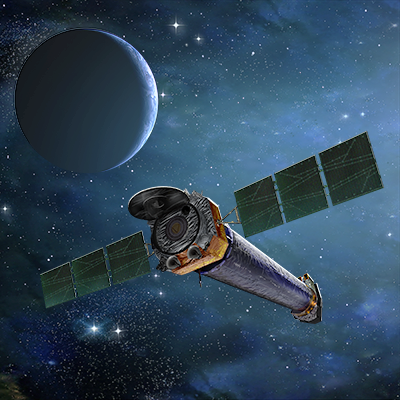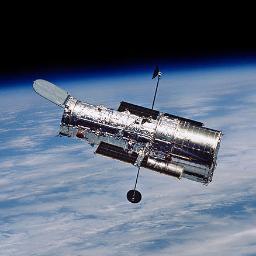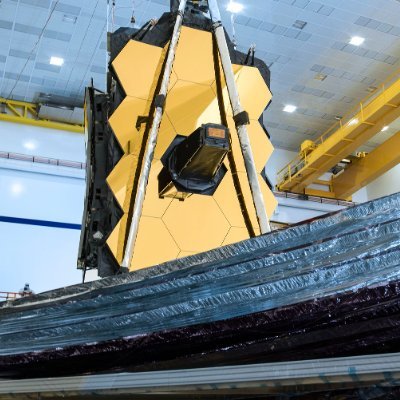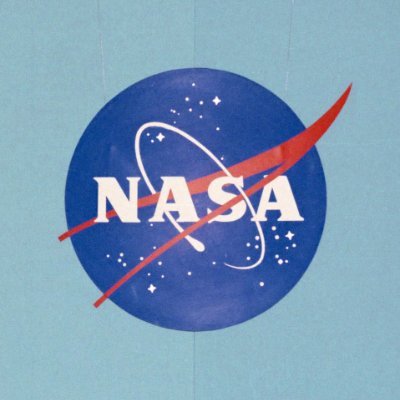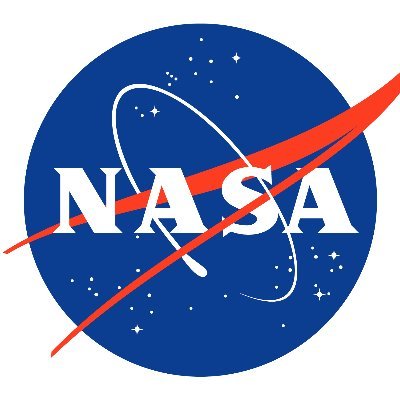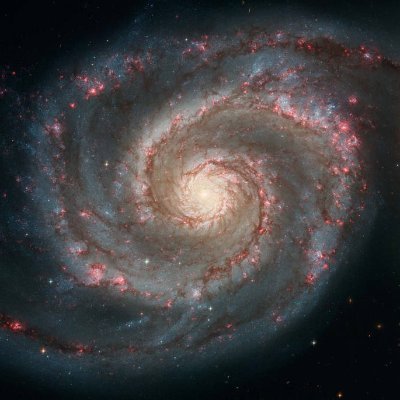
NASA Universe
@NASAUniverse
Followers
1M
Following
329
Media
5K
Statuses
12K
Your backstage pass to the universe and how NASA studies it. Verification: https://t.co/8yJgpYaajm
Greenbelt, MD
Joined March 2009
Plunge into the story behind some of NASA’s most iconic black hole videos! Follow @NASAGoddard astrophysicist Jeremy Schnittman through the process of producing these scientifically accurate visualizations showing flights around and into a black hole: https://t.co/gS5FbZuD0M
22
62
294
Interstellar comet update ☄️ NASA's fleet of spacecraft has been working to collect data on 3I/ATLAS, only the third object ever confirmed to have come from outside our solar system. Several missions have observed the comet – and others will get a chance soon! Details ⬇️
76
251
1K
IC 348 is a star-forming region located about 1,000 light-years from Earth in our Milky Way galaxy. The wispy structures that dominate this image are interstellar material that's reflecting light from stars. The fluffy-looking colored dots are developing young stars.✨
20
130
446
UGC 4879 is one of a kind! Classified as an irregular dwarf galaxy, UGC 4879 is a bit smaller and messier than its cosmic cousins, like spiral and elliptical galaxies. Its nearest neighbor is about 2.3 million light-years away, making it pretty isolated: https://t.co/cHMkW2VM6l
71
363
2K
Curious about dark matter, the invisible glue that holds the universe together? Dark matter makes up about 27% of the universe. It’s thought that it helps shape the cosmos, organizing galaxies and other cosmic objects. Learn more in our latest deep dive! https://t.co/9alaVZC47Z
50
207
825
Nature’s magnifying glass 🔎 Galaxies in these images might look stretched or warped. That’s due to gravitational lensing, a tool that allows us to peer even further into the universe! https://t.co/5PAlCDGLNM
58
347
2K
A new NASA History Report looks back at the SOFIA airborne infrared observatory! From 2010 through its final science flight #OTD in 2022, SOFIA helped astronomers around the world study cosmic events and objects invisible to other telescopes. ✈️ https://t.co/R8Jci0TMAU
16
128
589
Webb provided the first direct measurements of the potential for moon-formation in a carbon-rich disk encircling a giant exoplanet, which is itself orbiting a young red dwarf star. https://t.co/fXRuo1mhns
47
333
2K
There’s a rhythm to the stars. Astronomers identified a collection of pulsating red giant stars across the sky, each with a unique tone that depends on each star’s interior structure, mass, and size. #MondayMotivation
16
165
657
Another month of Hubble's Night Sky Challenge awaits! 🔭 October's list of cosmic targets just dropped: https://t.co/lj82yLs0SQ Compare your views to Hubble's, like the ones here. Or, find a star party to join: https://t.co/QhhWvwLVGR
35
266
1K
NGC 2775 is difficult to define. The galaxy in this #HubbleFriday image is home to a smooth center mostly devoid of gas, resembling an elliptical galaxy. But it also has a dusty ring with star clusters, like a spiral galaxy. So what is it? Find out here: https://t.co/QhMeuhA0yV
37
286
1K
Stuff approaching a black hole may swirl near the event horizon in a pancake of gas and debris called an accretion disk. Even though the black hole itself can’t be seen, the incredibly hot disk glows in X-rays. That’s one extreme pancake!
52
183
883
How do we find planets outside our solar system, and how can we tell which ones might be able to support life as we know it? @NASAJPL’s Dr. Eric Mamajek sat down with our Small Steps, Giant Leaps podcast to answer these questions and more. Listen now: https://t.co/7kTzx0yKH3
5
51
222
Here's an activity for the books! ✏️ Want to launch a rocket or zoom over a rainbow? Your little learner can trace lines and curves to build fine motor skills and hand-eye coordination, getting their little hands ready for writing. Just print and write: https://t.co/E2lelqiAZO
0
13
53
#TBT to Sept. 20, 1979, when NASA’s final High Energy Astronomy Observatory, HEAO 3, launched into space. It mapped the sky in gamma-ray light and made detailed measurements of cosmic ray particles, helping us learn about supernova remnants, distant galaxies, and more.
5
52
249
Are we alone in the universe? Help us figure that out! Join this citizen science effort and help UCLA SETI to train AI tools to separate Earth-based interference from possible technosignatures across the Milky Way. Learn more: https://t.co/cToHcYtagt
25
127
609
NASA has awarded Katalyst Space Technologies of Flagstaff, Arizona, a contract to raise the orbit of our Swift observatory to a higher altitude using their robotic servicing spacecraft. Read more about the orbit boost, currently targeted for spring 2026: https://t.co/zW7oMCeMhb
17
115
485
Webb took a look at the Sagittarius B2 molecular cloud, the most massive, and active star-forming region in our galaxy, located only a few hundred light years from our central black hole. Why is it so much more active than the rest of the galactic center? https://t.co/2l8zdrAf3M
71
665
3K
The million-mile journey to study the Sun's influence starts now! A @SpaceX Falcon 9 rocket carrying three new space weather missions launched at 7:30am ET (1130 UTC) on Wednesday, Sept. 24, from @NASAKennedy.
54
200
1K
Written in the stars 🌟 Hubble looked toward the constellation Sagittarius, unveiling a stunning scene of stars within our home galaxy, the Milky Way. Find out what we can learn about stars from their color and mass: https://t.co/7D9Twq2NZI
46
379
2K


